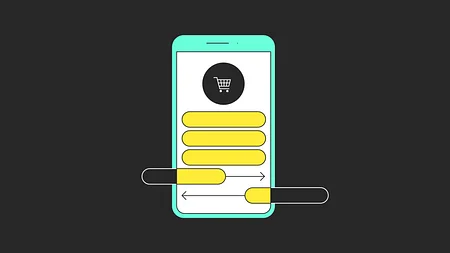How to keep first-mover advantage in SMB banking
Getting first-mover advantage is no easy feat, but what happens next? We take a look at how to maintain the advantage and how easily it can be lost.
Last time, we took a look at how to get first-mover advantage in the SMB banking market. Now we’ll tell you what to do once you’ve got it.
Product’s launched and market take-up is accelerating. By this point, you’ve got first mover advantage in the space. In SMB banking, it’s hard to say if any single provider has really achieved a first mover advantage yet. Multiple entrants are driving towards that goal but none are considered to be the definitive product in the area and more importantly, none have captured enough of the market. There’s only one way to lose first-mover advantage once you have it, complacency. Complacency from incumbent banks in the SMB banking space is why digital challengers have been able to capture a share of the market and are growing. The battle for product-market fit is ongoing and changes in the space can be the difference between staying on top and seeing your customers flee to the competition. Open Banking, IoT, and native digital experiences are just a few things that can disrupt the market further. Then there are the e-commerce players such as Amazon that could move the goalposts again. It has a huge marketplace, with plenty of SMBs transacting business through its platform. It offers online merchants the ability to add a button to their websites’ checkout pages that let shoppers pay via their Amazon account info. Overall it can offer funding, payments, and lending facilities for SMBs all within a single ecosystem. With its expertise in data science and analytics, Amazon could easily anticipate spending patterns too, for example, help SMBs avoid charges by facilitating flexible funding options. These could preemptively account for seasonal cash flows seen through historical data and project into the future – including tracking against similar businesses on Amazon marketplace. Maintaining the first mover advantage means staying ahead of the competition, foreseeing the issues today that’ll affect tomorrow and adapting products to fulfill needs as required. Staying on top of this multitude of issues is no easy task. It’s why companies can slip and lose their advantage in the face of changing markets and quick competition. The JTBD virtuous cycle is really a series of cycles, constantly taking on board the feedback given from users to improve design continuously. Creating a product-market fit isn’t a one-off occurrence and it’s unlikely to ever become perfect for every user. But through constant engagement with and feedback from the market you can get close. Unfortunately, not all plans are bulletproof, especially in a market that’s only just seeing innovative thought for the first time. Someone else might have a better idea, their research might have been more thorough, their development cycle might have yielded more thoughtful results, all of which can result in losing the first-mover advantage. It’s especially likely if you don’t engage the right people to design your product for you.
It’s best to start out with what not to do. Don’t just ape features that digital challengers offer. Creating your own take on a useful feature is fine, but every incumbent bank should be looking to do more, not play catch up. It’s a common reflex amongst the incumbent services to see what a digital challenger’s done and then get to work on aping the idea. Barclays had billboard adverts about freezing cards in-app. A service first offered by Monzo months ago and advertised using digital communication that users engage with. There’s nothing wrong with the ability to freeze a card in-app, it’s useful. The problem is rooted in why. Specifically, why did it take so long for incumbent banks to even consider this option and if it was considered, why was no research done on implementing it? Is the research structure at incumbent banks broken? If incumbent banks continue to let digital challengers lead by example then they run the risk of irrelevancy. There’ll come an inflection point where customers will go with the bank that removes pain points first, rather than wait half a year or longer for an incumbent to do the same. Starling and Tide have already provided mobile sign up, same-day setup, and no monthly fees for business accounts. Incumbent services are yet to offer these things, sign up in particular, has proven to be a particular pain point with SMBs. And with that lack of engagement from the incumbent banks SMBs are sure to leave and access services that can provide a smoother service. So, how can an incumbent bank take the advantage in a space that’s been invaded by digital challengers? Take on the challengers by designing and implementing services that take advantage of the digital landscape, rather than aping features and create new offerings that customers need but no-one else recognised. You can find all these things right here at 11:FS. To get the right product-market fit and take that first-mover advantage, email us at hello@11fs.com
Maintaining the advantage
Product’s launched and market take-up is accelerating. By this point, you’ve got first mover advantage in the space. In SMB banking, it’s hard to say if any single provider has really achieved a first mover advantage yet. Multiple entrants are driving towards that goal but none are considered to be the definitive product in the area and more importantly, none have captured enough of the market. There’s only one way to lose first-mover advantage once you have it, complacency. Complacency from incumbent banks in the SMB banking space is why digital challengers have been able to capture a share of the market and are growing. The battle for product-market fit is ongoing and changes in the space can be the difference between staying on top and seeing your customers flee to the competition. Open Banking, IoT, and native digital experiences are just a few things that can disrupt the market further. Then there are the e-commerce players such as Amazon that could move the goalposts again. It has a huge marketplace, with plenty of SMBs transacting business through its platform. It offers online merchants the ability to add a button to their websites’ checkout pages that let shoppers pay via their Amazon account info. Overall it can offer funding, payments, and lending facilities for SMBs all within a single ecosystem. With its expertise in data science and analytics, Amazon could easily anticipate spending patterns too, for example, help SMBs avoid charges by facilitating flexible funding options. These could preemptively account for seasonal cash flows seen through historical data and project into the future – including tracking against similar businesses on Amazon marketplace. Maintaining the first mover advantage means staying ahead of the competition, foreseeing the issues today that’ll affect tomorrow and adapting products to fulfill needs as required. Staying on top of this multitude of issues is no easy task. It’s why companies can slip and lose their advantage in the face of changing markets and quick competition. The JTBD virtuous cycle is really a series of cycles, constantly taking on board the feedback given from users to improve design continuously. Creating a product-market fit isn’t a one-off occurrence and it’s unlikely to ever become perfect for every user. But through constant engagement with and feedback from the market you can get close. Unfortunately, not all plans are bulletproof, especially in a market that’s only just seeing innovative thought for the first time. Someone else might have a better idea, their research might have been more thorough, their development cycle might have yielded more thoughtful results, all of which can result in losing the first-mover advantage. It’s especially likely if you don’t engage the right people to design your product for you.
How to take the advantage (what not to do)
It’s best to start out with what not to do. Don’t just ape features that digital challengers offer. Creating your own take on a useful feature is fine, but every incumbent bank should be looking to do more, not play catch up. It’s a common reflex amongst the incumbent services to see what a digital challenger’s done and then get to work on aping the idea. Barclays had billboard adverts about freezing cards in-app. A service first offered by Monzo months ago and advertised using digital communication that users engage with. There’s nothing wrong with the ability to freeze a card in-app, it’s useful. The problem is rooted in why. Specifically, why did it take so long for incumbent banks to even consider this option and if it was considered, why was no research done on implementing it? Is the research structure at incumbent banks broken? If incumbent banks continue to let digital challengers lead by example then they run the risk of irrelevancy. There’ll come an inflection point where customers will go with the bank that removes pain points first, rather than wait half a year or longer for an incumbent to do the same. Starling and Tide have already provided mobile sign up, same-day setup, and no monthly fees for business accounts. Incumbent services are yet to offer these things, sign up in particular, has proven to be a particular pain point with SMBs. And with that lack of engagement from the incumbent banks SMBs are sure to leave and access services that can provide a smoother service. So, how can an incumbent bank take the advantage in a space that’s been invaded by digital challengers? Take on the challengers by designing and implementing services that take advantage of the digital landscape, rather than aping features and create new offerings that customers need but no-one else recognised. You can find all these things right here at 11:FS. To get the right product-market fit and take that first-mover advantage, email us at hello@11fs.com


